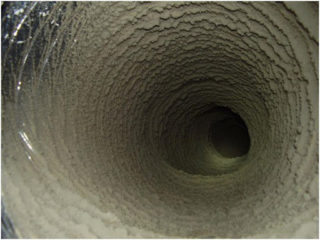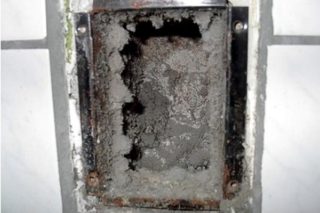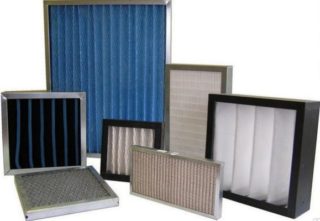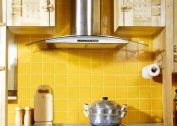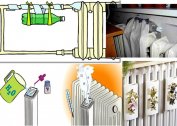Disinfection of air ducts in the ventilation system is an important regular event, due to which it is possible to create healthy microclimate conditions in the room. Disinfection is carried out either after mechanical cleaning of the line, or independently, regardless of previous manipulations with the ventilation system. The latter is especially true for medical institutions, laboratories, food production, etc.
The need and frequency of disinfection
During operation of the exhaust ventilation system, plaque (soot, grease, dirt, and sometimes humid environment) forms on its inner walls. Together, they form a favorable environment for the propagation of pathogenic flora. Fungi, infections, and other bacteria may exist on internal sections of the ventilation line. With the air supplied through the supply grilles, they enter the premises, into the respiratory tract of a person. This leads to serious health problems, ranging from allergic reactions to oncology. Therefore, the disinfection of ventilation systems must be carried out regularly.
Disinfection of ventilation systems according to SanPiN is done with a certain frequency, the frequency of which is regulated by the type of room:
- For medical facilities, catering establishments - 1 time per quarter (3-4 months).
- Preschool and school institutions - the norm is 2 times a year.
- Production shops and enterprises - 2 times a year.
- Shopping centers, office and commercial premises - a standard indicator once a year.
Specialists of ventilation duct disinfection organizations recommend that owners of apartments and private houses clean and disinfect the mains at least once every two years.
Types of dirt on the inner walls of the ventilation
Depending on the room in which the ventilation system is located, various types of dirt may form on its internal walls.
- Dust. This is a dry suspension in the form of flakes, which are located on the filters, the walls of the duct or air conditioning system. Dust is considered the most fire hazard. Light flakes quickly ignite from the slightest spark. Flames can spread throughout the ventilation system to several rooms at once.
- Mold and fungal formations. More often they are formed under conditions of increased humidity in the room, or if condensate regularly forms on the walls of the main line due to temperature changes. It is mold and fungus, getting into the rooms through the ventilation grilles, are the cause of the development of complex allergic reactions.
- Rust. It is also formed due to increased humidity or condensation inside the ventilation system. Sooner or later, rust disrupts the integrity of the line, which reduces the efficiency of the entire communication.
- Fat and fat soot. As a rule, they are formed in the ventilation lines of public catering or food production buildings. Therefore, the disinfection of ventilation here should be especially thorough. Due to the high accumulation of fat soot, the performance of the line decreases. The ventilation system can not cope with the flow of air masses. In the room there are smells of soot, burning. They are unpleasant in themselves and poison the human body with fumes. In addition, fat soot disables axial fans, grease traps.In case of fire, it is extremely difficult to extinguish such deposits. Therefore, cleansing the system is especially important.
- Chemical and reagent deposits. Formed in the ventilation ducts of laboratories, cabinets of chemistry and physics. If such deposits are not removed from the internal walls of the line in time, they threaten human health.
- Dirt after a fire or flood. These situations are force majeure. The maximum amount of soot, smoke and water settles on the walls of the ventilation shaft. Even after a major overhaul in the absence of cleaning, they remain there, through the ventilation grilles they again enter the room. Poison a person, provoke the subsidence of mold and fungus on the walls.
Any kind of dirt must be removed before disinfection by mechanical means.
Checking ventilation ducts for the need for disinfection
Despite the fact that disinfection of ventilation systems is carried out according to SanPiN with a certain frequency, you can independently determine the degree of contamination of the mine and the need for urgent cleaning.
- Visually inspect the mine.
- Take the flush from the inner walls for laboratory analysis. Samples must be taken from several different sections of the mine.
Often, to determine the effectiveness of the disinfecting solution, samples are taken before cleaning and after a small amount of the composition is applied to the walls of the ventilation hoses.
As a rule, cleaning and disinfection of ventilation systems is carried out using solutions that do not require further rinsing. Over time, they simply decompose into water and carbon dioxide.
Disinfectants
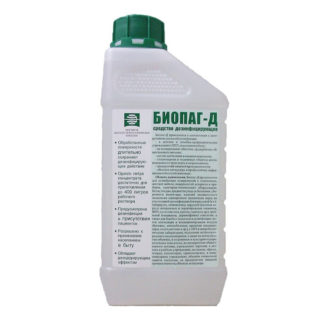 To eliminate the pathogenic flora from the inner walls of the ventilation shaft, aggressive alkaline compounds are used. The whole procedure is performed only in protective clothing, a mask and glasses, in accordance with the requirements of sanitary standards. After disinfection, the room must be ventilated, the entire system is driven in test mode.
To eliminate the pathogenic flora from the inner walls of the ventilation shaft, aggressive alkaline compounds are used. The whole procedure is performed only in protective clothing, a mask and glasses, in accordance with the requirements of sanitary standards. After disinfection, the room must be ventilated, the entire system is driven in test mode.
The concentration and type of disinfectant solution is selected according to the results of a previous laboratory analysis with a washout. The most common chemicals for ventilation disinfection in medical institutions and other facilities:
- Biopag-D;
- Aquaminol Forte;
- Frisept.
Before disinfecting at residential facilities, it is important to notify neighbors about the upcoming event, otherwise pairs of chemical compounds can get into neighboring rooms and harm a person.
Common mistakes and their consequences
When performing work, mistakes are often made. The most common of them:
- Self-cleaning and disinfection of highways. In this case, only a small part of the dirt is removed - which is visible. The bulk of soot, grease and rust is often hidden from the eyes of a simple person. Here you need special equipment. Therefore, self-cleaning is ineffective. Moreover, it can do even more harm, as the accumulated fat and soot move from place to place. They subsequently with air masses fall into the filters and ventilation grilles.
- Ignoring filter change. If, after disinfection and cleaning, filters and grease traps are not changed, the ventilation system works with a risk to human health. Throws particles of pathogenic flora accumulated on the filters into the room.
- System cleaning without further disinfection. Even if all the dirt is removed from the inner walls of the three shafts, pathogenic flora, fungus, bacteria still live in the cracks and joints of the highway. Therefore, disinfection is required.
A dangerous mistake is inviting lay people to clean and disinfect the ventilation shaft. Such specialists take money for work that they do illiterate. And this is at best. At worst, the ventilation system is disabled.
Disinfection of ventilation ducts in a medical facility
Every medical facility has a disinfection journal. It is filled by employees of a company that carries out cleaning and treatment of ventilation shafts. The following data is entered in the log:
- type of work performed;
- date of completed activities;
- the name of the chemicals used;
- Signature of responsible persons.
The ventilation system is processed in two stages:
- All elements, parts and internal walls of the shaft are mechanically cleaned. To do this, use industrial vacuum cleaners, compressed air plants, high pressure washers or steam cleaners. It all depends on the type of dirt accumulated inside.
- Specialists inside irrigate the walls of the mine.
All work is performed through the inspection hatches under the control of the camcorder.
After completing work in the premises, a general cleaning with sanitary treatment of all surfaces and tools is carried out.
Cleaning and disinfection of ventilation shafts in medical facilities is carried out strictly on schedule.

